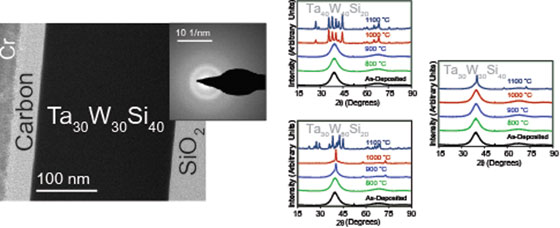Crossref Citations
This article has been cited by the following publications. This list is generated based on data provided by
Crossref.
Mcglone, John M.
Pommerenck, Jordan K.
Graham, Matt W.
and
Wager, John F.
2018.
Amorphous Metal Thin Films for Thermal Inkjet Printing.
Journal of Microelectromechanical Systems,
Vol. 27,
Issue. 2,
p.
289.
Asfaw, A. T.
Kleinbaum, E. I.
Henry, M. D.
Shaner, E. A.
and
Lyon, S. A.
2019.
Transport Measurements of Surface Electrons in 200-nm-Deep Helium-Filled Microchannels Above Amorphous Metallic Electrodes.
Journal of Low Temperature Physics,
Vol. 195,
Issue. 3-4,
p.
300.
Jenkins, Melanie
Austin, Dustin Z.
Conley, John F.
Fan, Junqing
de Groot, C. H.
Jiang, Liudi
Fan, Ye
Ali, Rizwan
Ghosh, Gargi
Orlowski, Marius
and
King, Sean W.
2019.
Review—Beyond the Highs and Lows: A Perspective on the Future of Dielectrics Research for Nanoelectronic Devices.
ECS Journal of Solid State Science and Technology,
Vol. 8,
Issue. 11,
p.
N159.
Jenkins, M. A.
McGlone, J. M.
Wager, J. F.
and
Conley, J. F.
2019.
Internal photoemission spectroscopy determination of barrier heights between Ta-based amorphous metals and atomic layer deposited insulators.
Journal of Applied Physics,
Vol. 125,
Issue. 5,
Kaplan, Maciej
Srinath, Aishwarya
Riekehr, Lars
Nyholm, Leif
Hjörvarsson, Björgvin
and
Fritze, Stefan
2022.
Combinatorial Design of Amorphous Tanisic Thin Films with Enhanced Hardness, Thermal Stability, and Corrosion Resistance.
SSRN Electronic Journal ,
Kaplan, Maciej
Srinath, Aishwarya
Riekehr, Lars
Nyholm, Leif
Hjörvarsson, Björgvin
and
Fritze, Stefan
2022.
Combinatorial design of amorphous TaNiSiC thin films with enhanced hardness, thermal stability, and corrosion resistance.
Materials & Design,
Vol. 220,
Issue. ,
p.
110827.
Wang, Chenyang
Zhang, Zhifu
Wu, Haofei
Wang, Xiaodong
Reddy, Kolan Madhav
Liu, Pan
and
Song, Shuangxi
2024.
High-temperature Mo-based metallic glass thin films with tunable microstructure and mechanical behaviors.
Journal of Materials Science & Technology,
Vol. 198,
Issue. ,
p.
20.
SU, Chen
and
GUO, ShengFeng
2025.
Research progress of high-temperature amorphous alloys.
SCIENTIA SINICA Physica, Mechanica & Astronomica,
Vol. 55,
Issue. 8,
p.
286114.


